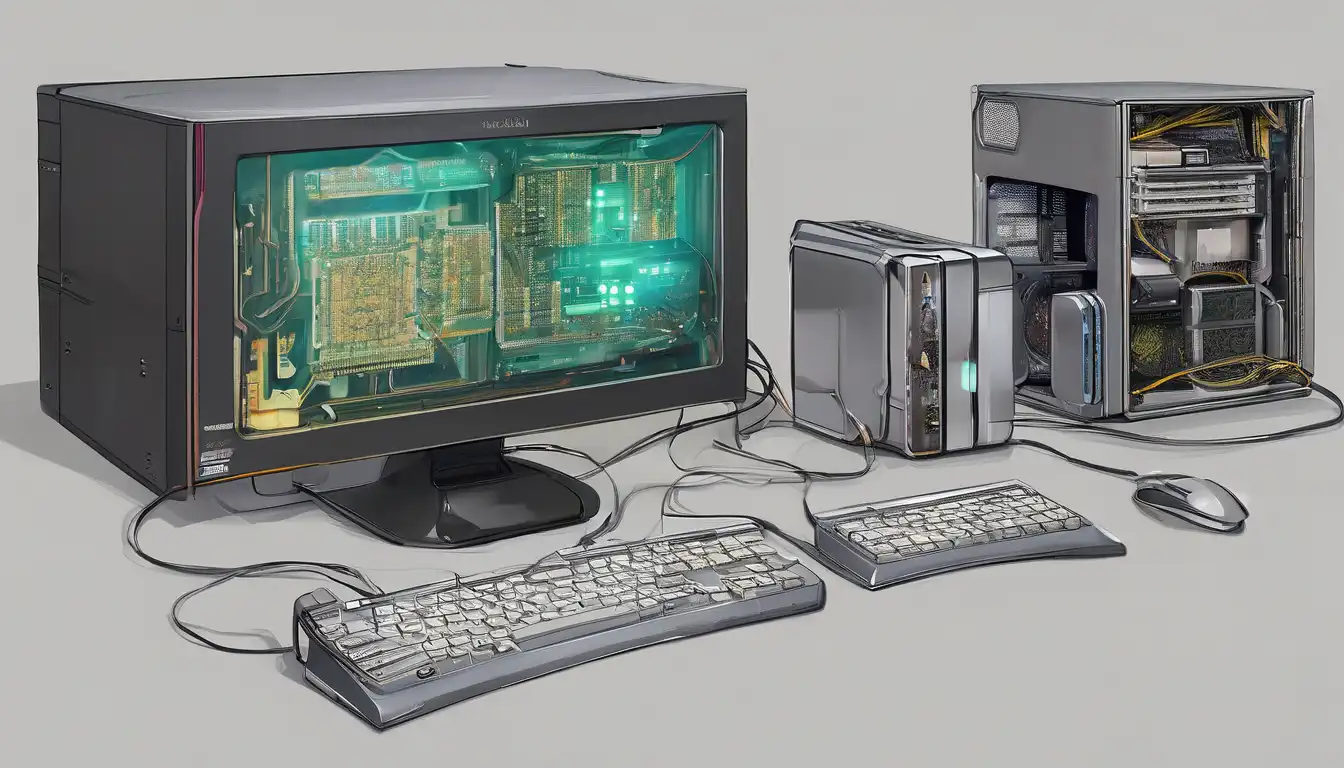Revolutionary Advances in Computer Hardware Technology
The landscape of computer hardware technology is undergoing unprecedented transformation, with innovations emerging at an accelerated pace. From quantum computing breakthroughs to AI-optimized processors, the latest developments are reshaping how we interact with technology and pushing the boundaries of computational power. These advancements not only enhance performance but also improve energy efficiency, making computing more sustainable and accessible than ever before.
Next-Generation Processors and CPU Architecture
The processor market has witnessed remarkable evolution with chip manufacturers pushing the limits of Moore's Law. Modern CPUs now feature advanced architectures that optimize both single-threaded and multi-threaded performance. The integration of artificial intelligence capabilities directly into processors represents one of the most significant hardware innovations in recent years. These AI-enhanced chips can accelerate machine learning tasks, improve power management, and optimize performance based on user behavior patterns.
Manufacturers are also focusing on heterogeneous computing, combining different types of cores within a single processor. This approach allows for better task specialization, where high-performance cores handle demanding applications while efficiency cores manage background tasks. The result is improved battery life for mobile devices and better thermal management for desktop systems. These processor innovations are crucial for supporting emerging technologies like virtual reality and advanced gaming applications.
Graphics Processing Units: Beyond Gaming
Graphics Processing Units (GPUs) have evolved from specialized gaming components to versatile computational powerhouses. Modern GPUs now feature dedicated AI accelerators, ray tracing capabilities, and advanced tensor cores that enable real-time rendering and complex calculations. The latest GPU innovations include:
- Real-time ray tracing for photorealistic graphics
- AI-powered upscaling technologies like DLSS and FSR
- Enhanced memory bandwidth with GDDR6X and HBM3
- Multi-chip module designs for scalable performance
These advancements make GPUs essential not just for gaming but also for scientific research, data analysis, and creative applications. The parallel processing capabilities of modern GPUs enable them to handle complex simulations and machine learning workloads more efficiently than traditional CPUs.
Memory and Storage Revolution
The memory and storage sectors have seen groundbreaking innovations that dramatically improve system responsiveness and data access speeds. DDR5 memory technology has doubled bandwidth compared to previous generations, while reducing power consumption. Meanwhile, storage solutions have evolved with PCIe 5.0 SSDs offering read/write speeds exceeding 10,000 MB/s, making traditional hard drives obsolete for performance-critical applications.
Emerging technologies like 3D XPoint and phase-change memory promise to bridge the gap between volatile and non-volatile memory, potentially revolutionizing how computers handle data. These innovations in computer memory architecture are essential for supporting data-intensive applications and artificial intelligence workloads that require rapid access to large datasets.
Quantum Computing Hardware Breakthroughs
Quantum computing represents the frontier of hardware innovation, with researchers making significant progress in developing stable qubits and error correction mechanisms. Recent advancements include:
- Superconducting qubits with improved coherence times
- Topological qubits that are more resistant to environmental interference
- Cryogenic control systems for maintaining quantum states
- Scalable quantum processor architectures
While still in early stages, these quantum hardware innovations promise to solve problems that are currently intractable for classical computers, with potential applications in drug discovery, cryptography, and complex system optimization.
Cooling and Thermal Management Innovations
As hardware components become more powerful, effective thermal management has become increasingly critical. Recent cooling innovations include:
- Advanced liquid cooling systems with smarter pump controls
- Phase-change cooling solutions for extreme overclocking
- Graphene-based thermal interface materials
- AI-optimized fan curves and cooling profiles
These cooling technologies not only maintain optimal operating temperatures but also contribute to energy efficiency by reducing the power required for thermal management. Proper cooling is essential for maintaining hardware longevity and consistent performance, especially in high-performance computing environments.
Connectivity and Peripheral Advancements
The latest hardware innovations extend beyond core components to include cutting-edge connectivity solutions. USB4 and Thunderbolt 4 technologies provide unprecedented data transfer speeds and power delivery capabilities. Wireless technologies like Wi-Fi 6E and Bluetooth 5.3 offer improved reliability and lower latency for peripheral connections.
Peripheral hardware has also seen significant innovation, with high-refresh-rate monitors, mechanical keyboards with customizable actuation points, and precision gaming mice featuring advanced sensors. These developments enhance the overall user experience and enable new applications in gaming, content creation, and professional workflows.
Sustainable Hardware Design
An increasingly important trend in hardware innovation is sustainability. Manufacturers are focusing on:
- Energy-efficient component designs
- Recyclable materials and modular architectures
- Reduced carbon footprint in manufacturing processes
- Longer product lifecycles and repairability
These sustainable hardware initiatives not only benefit the environment but also provide cost savings for consumers and businesses through reduced energy consumption and extended product usability.
The Future of Hardware Technology
Looking ahead, several emerging technologies promise to further revolutionize computer hardware. Neuromorphic computing, which mimics the human brain's neural structure, could lead to more efficient AI processing. Optical computing, using light instead of electricity, might overcome current limitations in data transfer speeds. Meanwhile, advances in materials science, particularly with graphene and other two-dimensional materials, could enable entirely new computing paradigms.
The integration of hardware and software through specialized accelerators and domain-specific architectures will continue to drive performance improvements. As these innovations mature, they will enable new applications in artificial intelligence, virtual reality, and scientific computing that are currently beyond our reach.
The rapid pace of hardware innovation shows no signs of slowing, with each breakthrough building upon previous advancements to create more powerful, efficient, and capable computing systems. Staying informed about these developments is essential for anyone involved in technology, from casual users to IT professionals and hardware enthusiasts.
